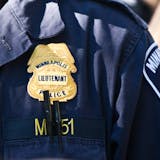A new partnership between Solve's Minneapolis ad agency and one of the nation's 107 historically Black colleges and universities (HBCUs) aims to introduce more students of color to the creative field of advertising.
The partnership, which grew after the police killing of George Floyd, pairs Morgan State University — an East Coast school with no advertising chops — with an award winning agency looking for a pipeline to more diverse hiring.
The idea came to John Colasanti, who founded Solve in Minneapolis nine years ago after career stops in Chicago, Detroit and Boston. Solve's staff is 84% white and its leadership team has no people of color. Nationwide, only 0.7% of ad and marketing executives are Black and 5.8% of all ad staffers are Black, according to the U.S. Bureau of Labor Statistics and the American Association of Advertising Agencies.
Determined to change that, Solve this summer signed a diversity pledge along with Carmichael Lynch, Colle McVoy, Periscope, and 30 other Minnesota ad firms. The agency, which lends creative muscle to brands such as Sunoco, Porsche, Bentley, American Standard, Raymond James and True Value, is now bringing its experience and new online classes to Morgan State for the first time in the hopes of "trying to a build an [employment] pipeline and increase diverse perspectives here," Colasanti said.
After nationwide protests and COVID-19 shutdowns this summer, Colasanti kept thinking of the pipeline and "why there aren't more people of color in the advertising world. Wouldn't it be interesting if we can work with a school that may not have an ad program?"
He contacted the communications deans at 35 HBCUs, offering to teach advertising classes via Zoom. One school was eager. "I don't want this just to be dating. I want this to be a marriage," Morgan's Strategic Communications Department chairman, David Marshall, told Colasanti.
Marshall wants the first ad class at Morgan to morph into project work, internships, advertising degrees and solid careers in the creative field for his students. He wants an accredited advertising degree program at the school by 2022. Solve's work at Morgan is a first step.
"The goal is to say to our students, 'There is a wonderful opportunity for you to participate in the field of advertising that we have not — heretofore — been able to offer you," said Marshall who landed one of his first jobs out of college in Duluth. There, he worked for three years as the only Black TV reporter at KBJR in the 1990s. It proved a positive work experience. Now he's excited to introduce Morgan students to a Minnesota ad firm wanting to invest in them.



